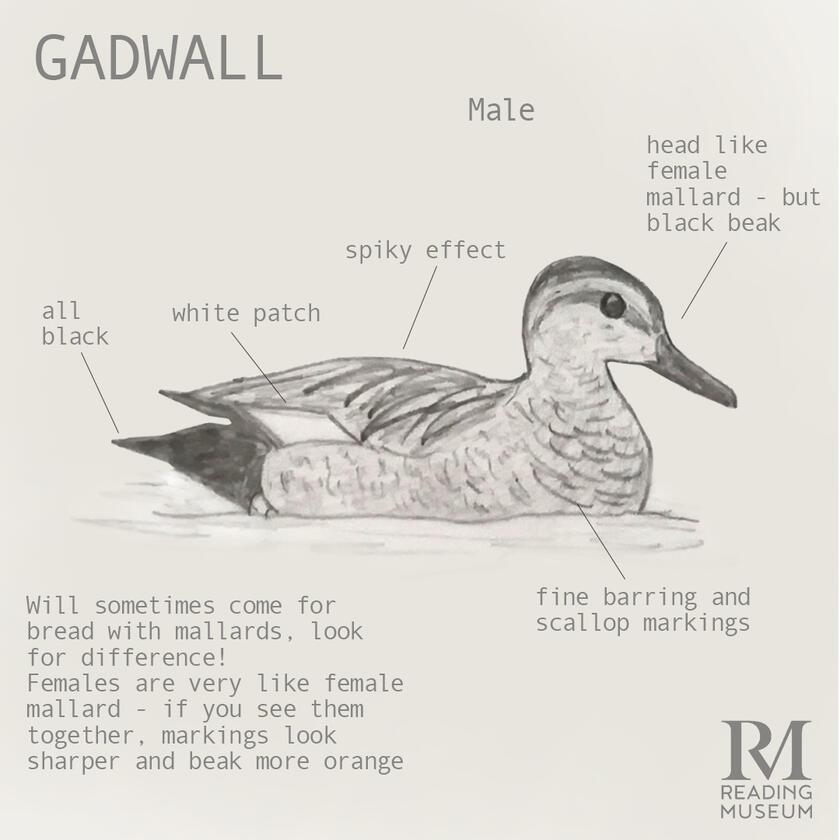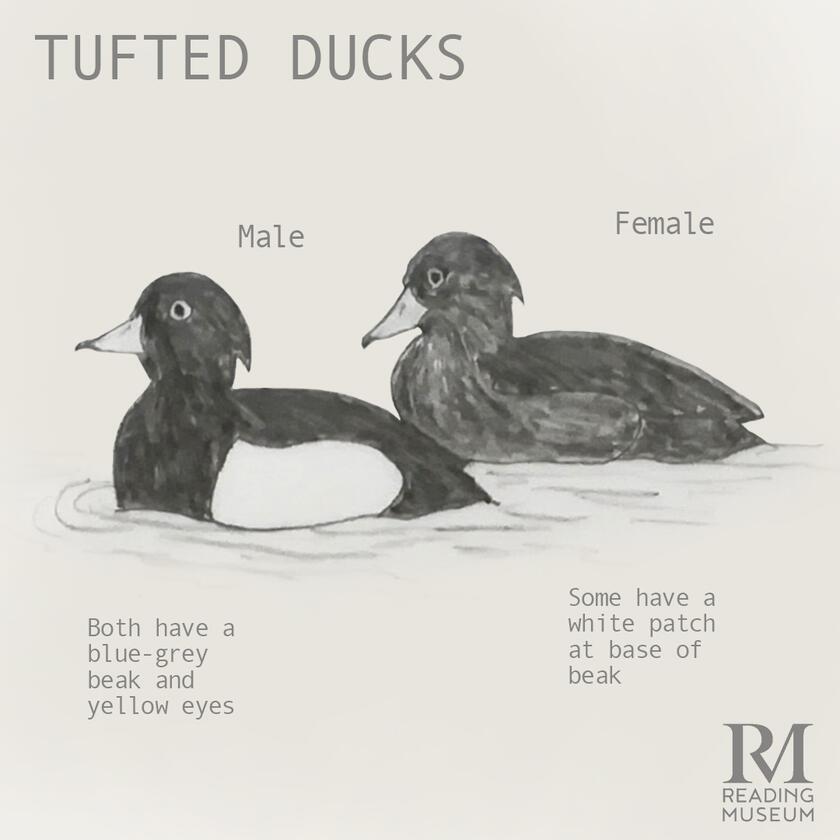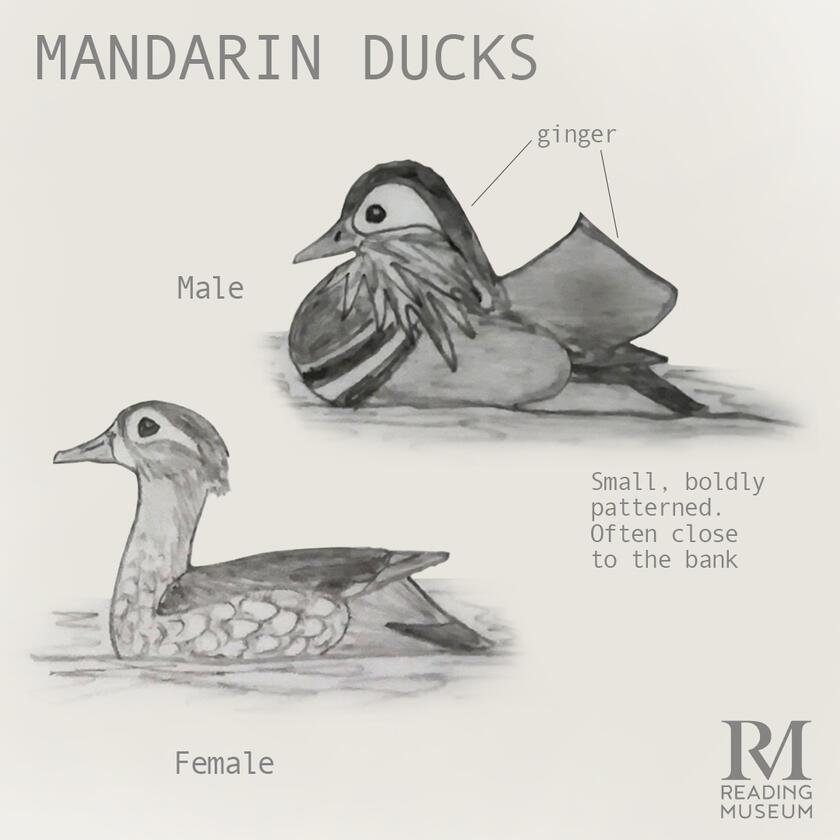Reading is a town between two rivers, the Thames and the Kennet, along with a lot of other smaller waterways like the Holybrook. The paths beside the rivers are a great place for a walk, jog or cycle, and the rivers are pretty good places to see wildlife too – even if that’s not the first thing on your mind.
If you’ve ever noticed a bird along the river and wondered ‘What is that and what is it doing there?’ but never got round to googling it when you got home, this guide is for you! And if you’ve never really thought about it…well, you might be inspired to look closer. Although you won’t need any special equipment to see these birds, just your eyes.
The birds are grouped by where you're most likely to spot them – on the riverbank, on the water, at the water's edge or flying over – and then by their shape and colour. It assumes no knowledge, but most people will know some of the birds already. And we’ll start with some of those.

A misty morning on the Thames at Reading
On the Riverbank
Ducks. Does anyone not recognise a duck? Fat quacking birds, with flattish beaks, that only shuffle out of the way if you get too close. This is actually one of many kinds of duck – it’s called the Mallard. Males are mostly grey with a reddish-brown chest and bottle green head during the breeding season, but after July they moult and look more like the brown females. You can identify a Mallard of either sex at any time by a blue patch in its wing – this is usually hidden when they’re swimming, but on the bank they often stretch and preen. However, the Mallard is the ancestor of the domestic duck. Other colours have been introduced by feral ones (tame stock that has escaped and is now living wild). Black, white and combinations of the two are quite common. These don’t always have the blue patch. But luckily they don’t really look much like any other kind of duck either.
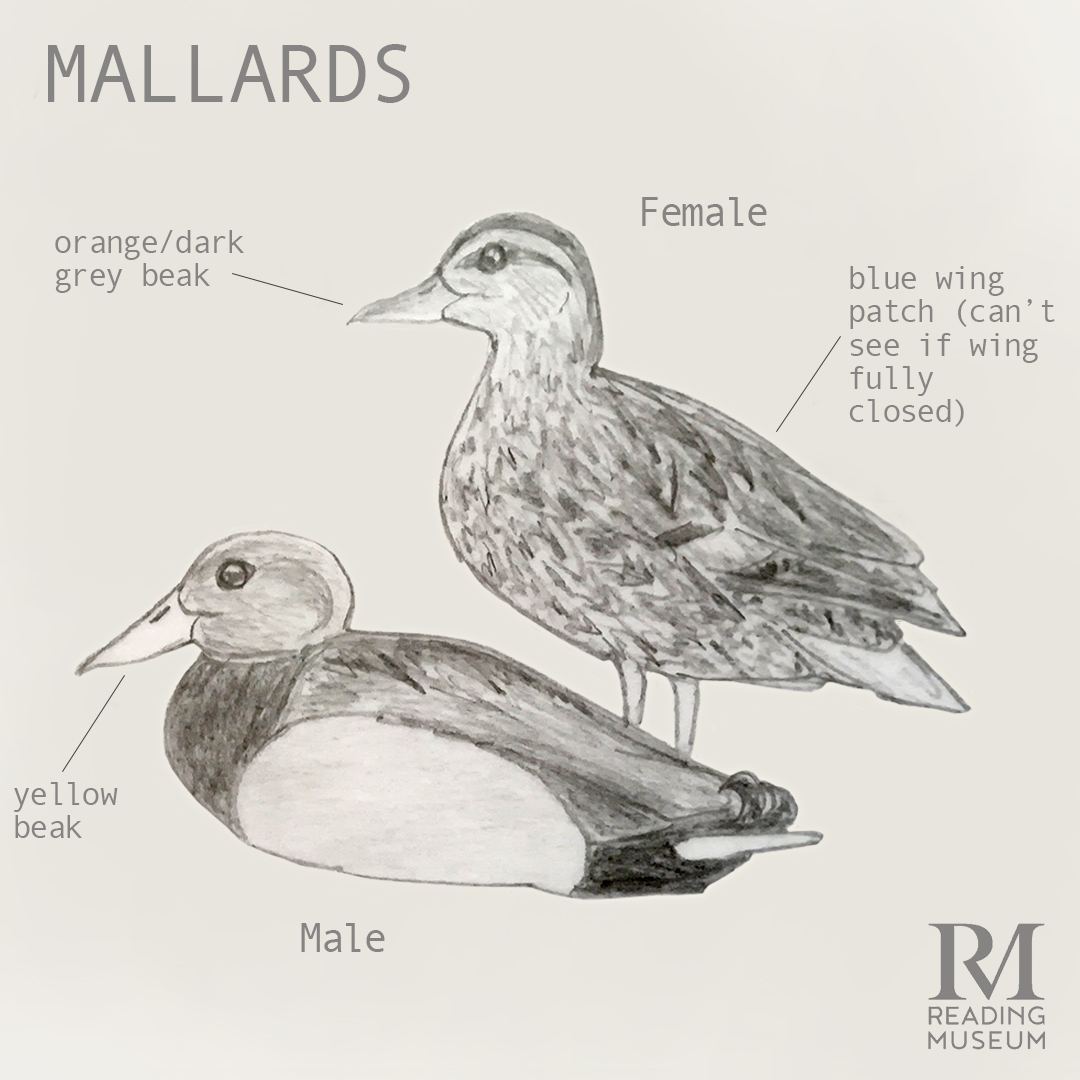
Male and female Mallards
Larger ones are…
Geese. The commonest type is grey with pink legs and orange beaks. These are Greylag Geese. Like the ducks, most are not truly wild but were introduced on places like lowland rivers. Sometimes you’ll see a white or partly white one – yes, this goose is the ancestor of the domestic variety and some are feral. The big wing feathers were used to make quill pens, although unlike in the movies the ‘feathery’ part of the feather would usually be cut off before anyone wrote with them.
Canada Geese are browner with a black head and neck and a white patch on their cheeks and round their chin. As the name suggests they were introduced from Canada, getting established by escapes from ornamental wildfowl collections in the nineteenth century.
A striking-looking bird that’s pretty common on the Thames is the Egyptian Goose. It’s between ducks and geese in size, mostly a kind of gingery or cinnamon colour with dark eyepatches. This is another escapee from wildfowl collections, and has increased in population since the 1980s. Originally from central and southern Africa, it can be recognised in Ancient Egyptian artwork.
Proper wild geese migrate between lonely estuaries and their breeding grounds on the arctic tundra. But these ones stay put all year and scrounge bread. You need to be careful if they have young with them though – the yellow/grey fluffy goslings are pretty cute but if you show too much interest their parents will hiss at you. And they might try to bite you if you don’t take the hint!
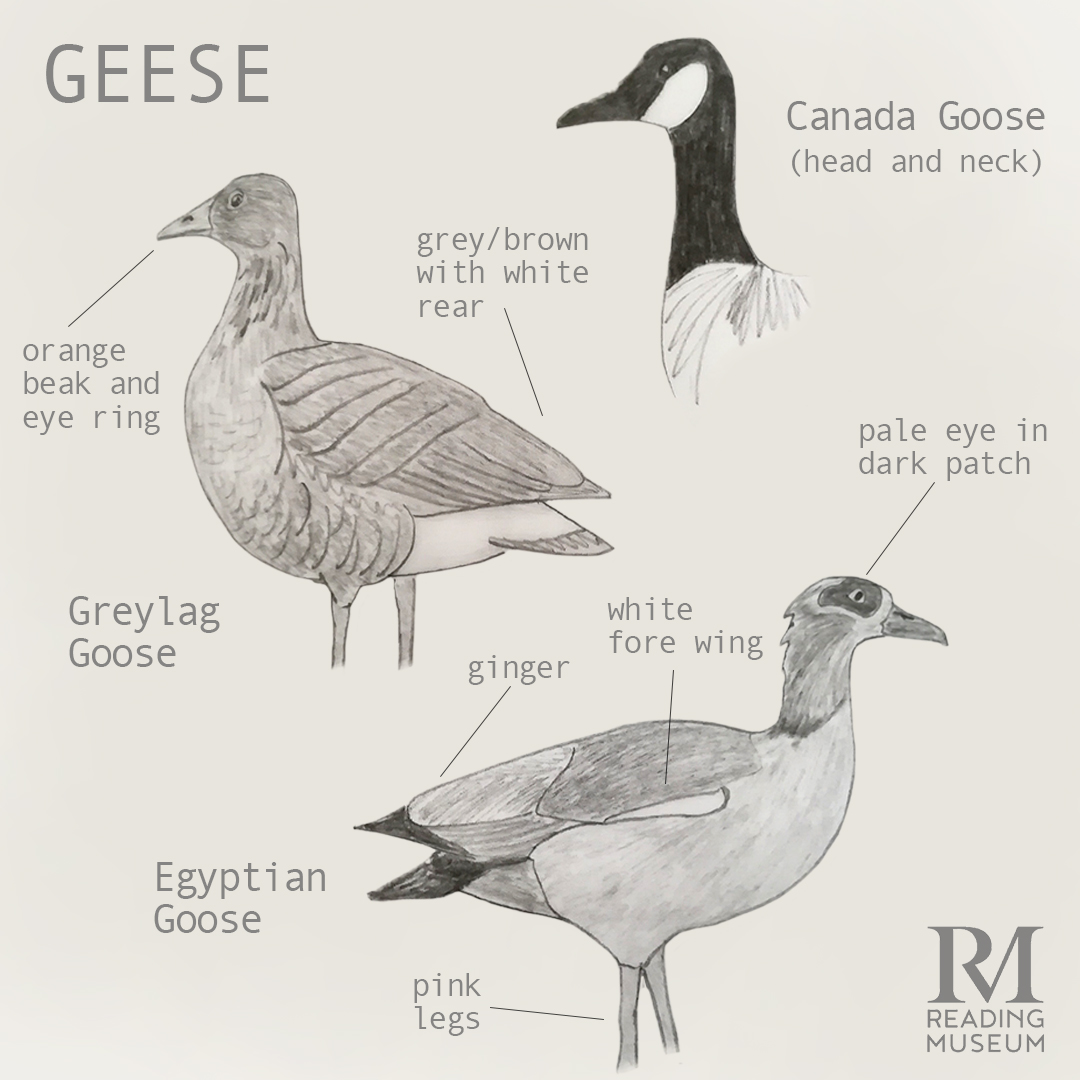
Geese
Small, fat, not a duck?
Rounded blackish birds, smaller than ducks and with longer legs, will usually be Moorhens. As you approach they tend to slip off into cover, or you might see them moving away on the water. They have a jerky way of swimming and show upturned tails with white patches a bit like a rabbit’s tail (known as a scut). They have long narrow toes, not webbed feet, and a pointed beak with a sort of shield extending onto the front of the head, not at all duck-like. And it’s red and yellow. (See also Coot, in the On the Water section.)
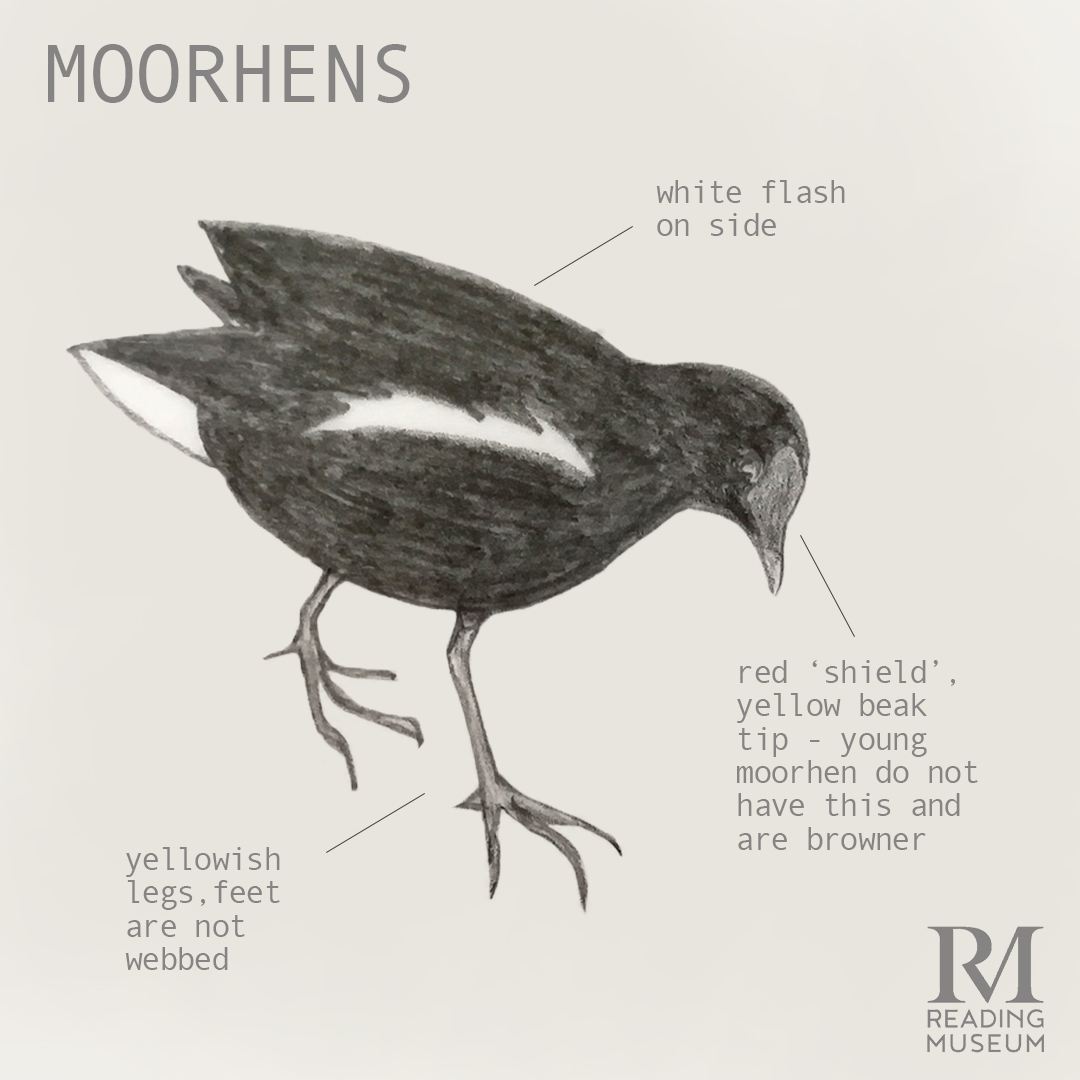
Moorhens
What's that small bird?
A lot of small birds are quite hard to identify, but if you’re lucky you might spot the Grey Wagtail. This one is included in the Absolute Beginner's Guide because you'll only see it by the river and it doesn't tend to lurk in bushes! However you’ll usually notice them at first flying away from you, a bounding flight ending in a dive to another point further along the bank, showing a bright yellow rear end. If you sneak up on them you’ll see that they are, in fact, mostly grey on top and yellow underneath. They're smaller than a sparrow in body size, but have very long tails (which they do wag, or bob really). They often hang around in pairs. In summer you can tell the male by his black throat.
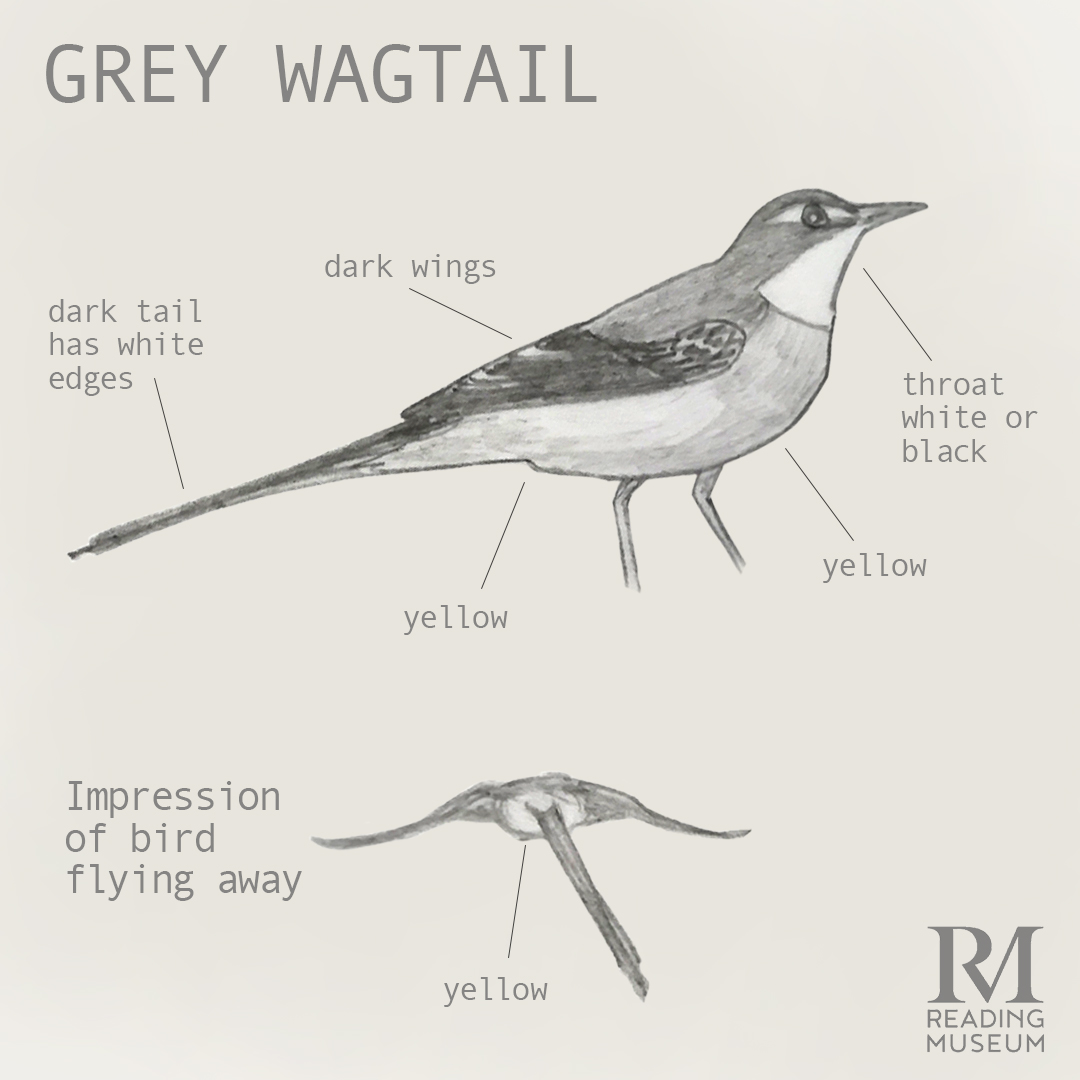
Grey Wagtail
On the Water
Although some of the birds in this section can be seen on the riverbank, you're more likely to spot them on the water. Swans, for example. Big, white, absolutely unmistakeable...There are actually three types of white swan in Britain but only one you'll find coming for bread! These are Mute Swans, although they actually make quite a range of noises from soft grunts and hisses to loud trumpeting calls. They were introduced to lowland rivers in historical times, probably for food. They can form big flocks, with over 300 being counted at Thameside Promenade. Young ones are brown, getting whiter over their first year. If you see a black swan it's not a mutant but a different type - another escape from captivity, the Black Swan from Australia.
And don't forget the ducks and geese can also swim!

Mute Swan
Different ducks?
Some other ducks you might see on the water are the Tufted Duck, which is smallish, roundish and dives for its food rather than upending like the Mallard - males are black and white, females dark brown - the Gadwall, which looks a lot like a Mallard but has white in its wings instead of blue, and the little Mandarin, which looks as unlike a Mallard as it's possible to get while still being duck-shaped. Male Mandarins have a ginger crest and ruff, and what appear to be sails sticking up where their wings should be (these are actually specially-shaped wing feathers for display - but Mandarins can still fly perfectly well). Females are brown with spectacle markings and spots.
Fat, black, not a duck?
A roundish, blackish bird, which dives as well as paddling about, is a Coot. It is like a bigger, more assertive Moorhen (see On the Riverbank), with a white beak and head shield. It is more likely to be seen in the water than on the bank, but if you do see one out of the water look for its extraordinary lobed feet!

Young and adult Coot
Long, black, long-necked
A longer-bodied, longer-necked blackish bird on the water will be a Cormorant. You can often see a white patch on their cheeks extending under their chin. They are fish-eaters and dive to chase their prey, travelling a long way under the water. You'll also see them perching implausibly on trees and posts with big webbed feet, sometimes with their wings open. This might be to dry their wings, or to ease pressure on a full stomach - nobody knows for sure. Young ones are browner with a pale underside.
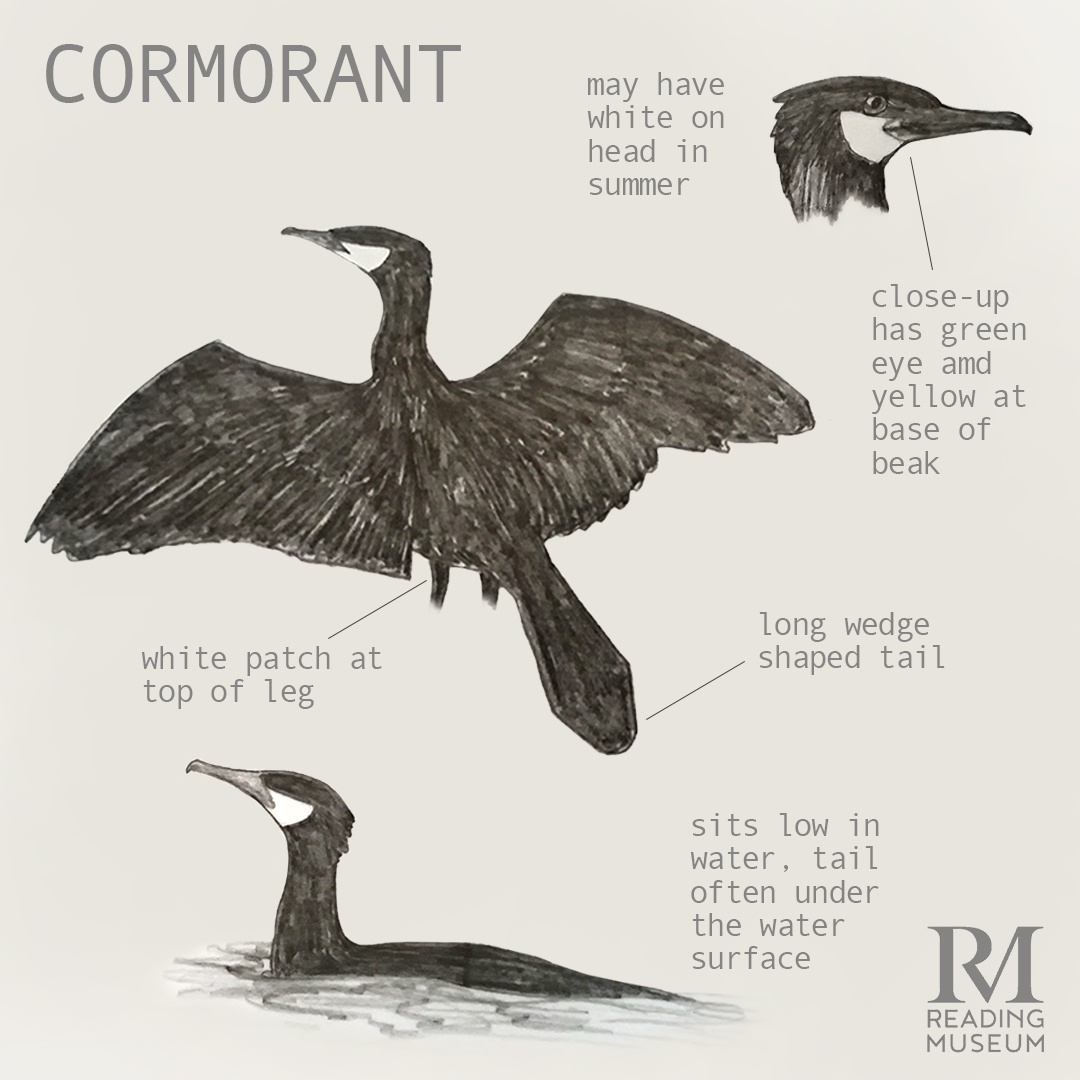
Cormorant
Long, long-necked, not black
The Great Crested Grebe is also a long-bodied, long-necked diver which eats fish, but it's smaller and more elegant than the Cormorant, with a sharp, pointed beak and a distinctive ruff around its head during the breeding season, which starts as early as January. From a distance it looks slim, dark above and light below. If you're lucky you might see one carrying its striped chicks among the feathers on its back.
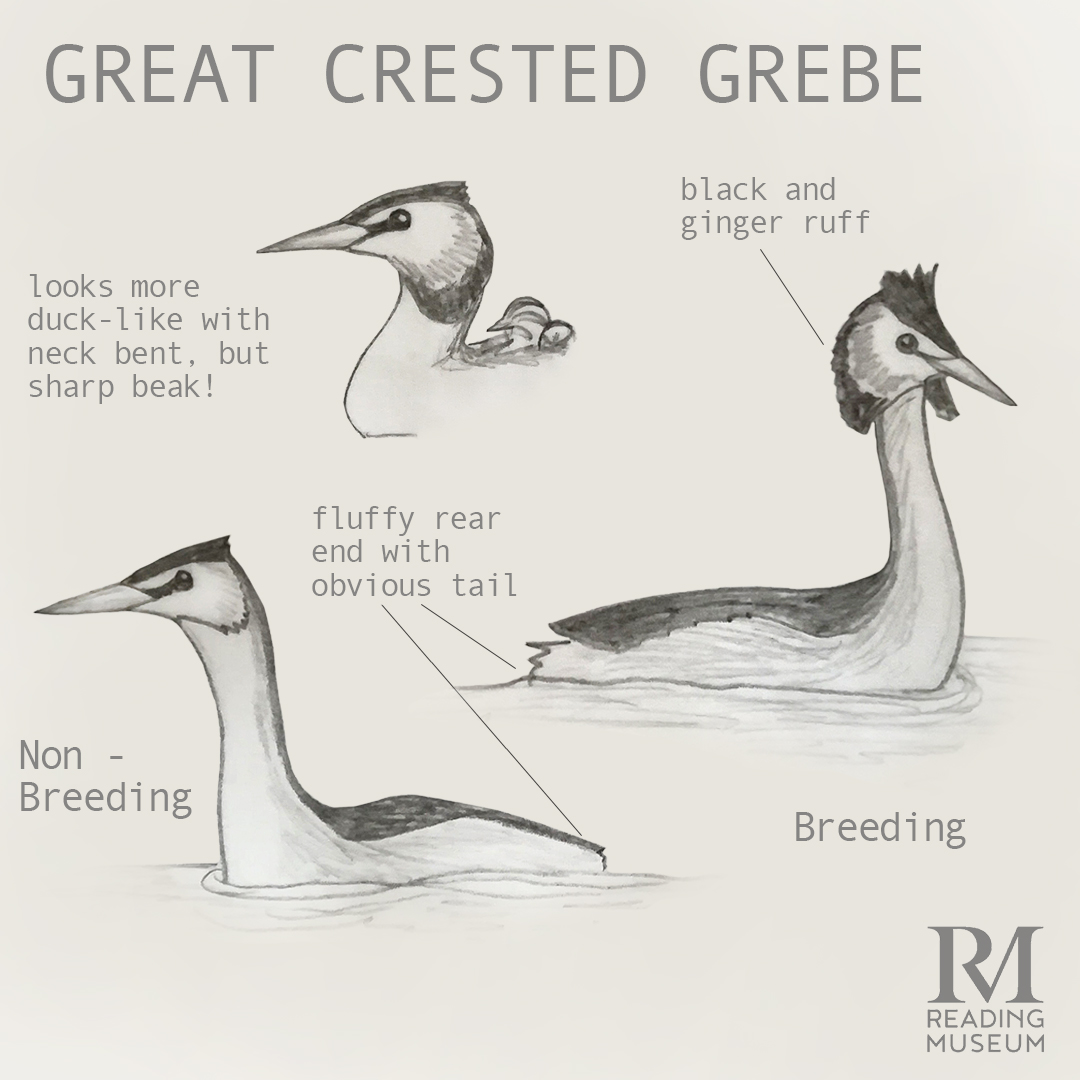
Great Crested Grebe
At the Water's Edge
A tall, grey and white, long-necked bird, standing oddly still and upright among reeds or walking with careful steps along the edge of the water, is a Grey Heron. They use their dagger-like beak to catch fish, frogs, rats or anything else that comes within reach. If you disturb one, it will fly off in a rather lumbering way, with its head tucked in and legs trailing. It has a smaller cousin, the Little Egret, which is pure white. This elegant bird is a newcomer to Britain, having spread from France during the late twentieth century. When it flies, you can often see that its feet are yellow (though not if they're really muddy!) Both can also be seen stalking about in wet grassy areas next to the rivers.
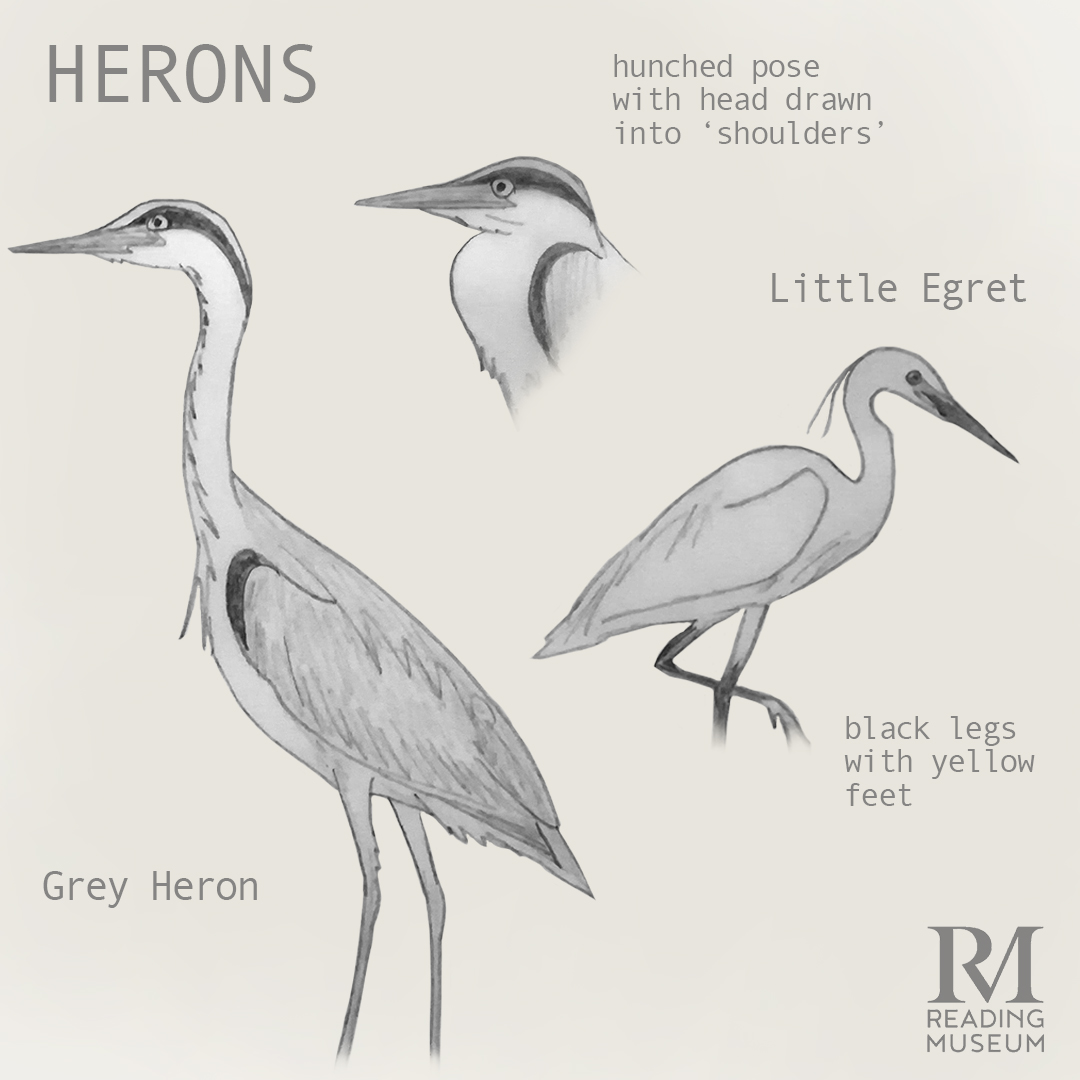
Grey Heron and Little Egret
Flying Over
The birds in this section are most likely to be seen in flight, although gulls will join the scrum for bread on the bank or in the water. They’re not just seagulls – there are several different kinds. The commonest, and smallest, is called the Black-headed Gull. In summer it has a dark brown hood (not black!), and in winter two dark smudges behind its eyes. Its back and upper wings are mostly pale grey and there is a white wedge along the front edge of the outer wing. Its legs and beak are red.
Bigger gulls are usually Lesser Black-backed Gulls. They're much darker too, with mainly black wingtips, a heavier yellow beak with a red spot near the tip, pale eyes, and yellow legs. The Herring Gull is similar but is pale grey instead of dark and has pink legs instead of yellow. Both these can live about 30 years and take four years to grow up - in their first year they're a kind of mottled brown with dark legs and beak, gradually getting more like the adults.
The Common Gull is (ironically) less common, and you’ll only see it in winter. It’s a bit bigger than the Black-headed Gulls it usually hangs out with, but smaller than the others, and has medium-grey back and wings, yellowish beak, greenish legs and black eyes.
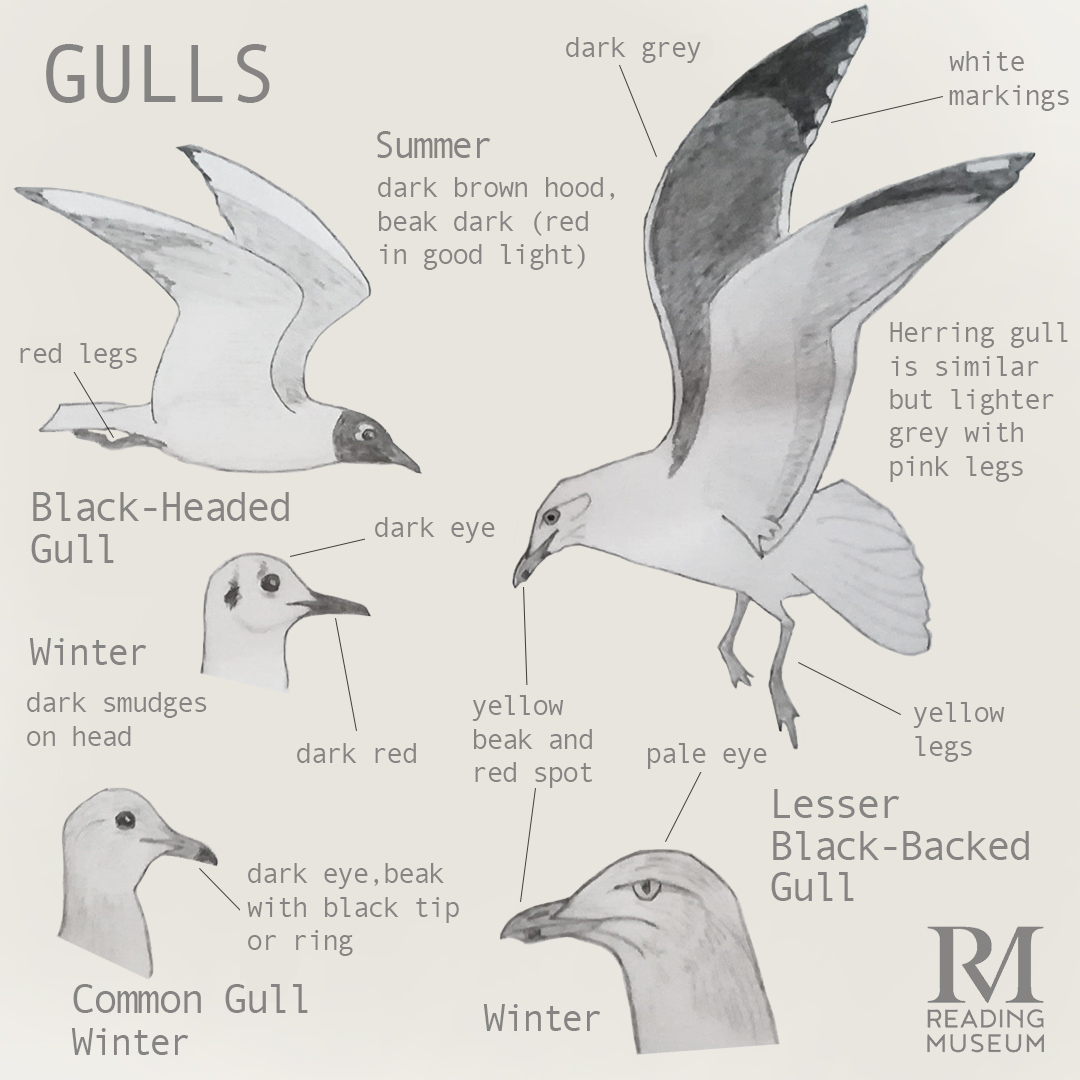
Gulls
Does that gull look a bit thin to you?
Common Terns can easily be confused with Black-headed Gulls, as they are pale with a black head and a red beak. But if you look again it's a black cap not a brown hood, and the beak is long and pointed. Terns are smaller with a slender build, narrow wings and a long, forked tail. While gulls tend to soar and glide with some leisurely flapping, terns are always beating their wings with quick, light strokes. They catch fish by plunge-diving from a hover, although you'll mostly see them commuting along the river between the lakes and flooded gravel pits where they hunt and breed. They often call in flight, an odd trill that doesn’t sound at all like a gull! They’re summer visitors, not year-round residents, so only here between April and September.
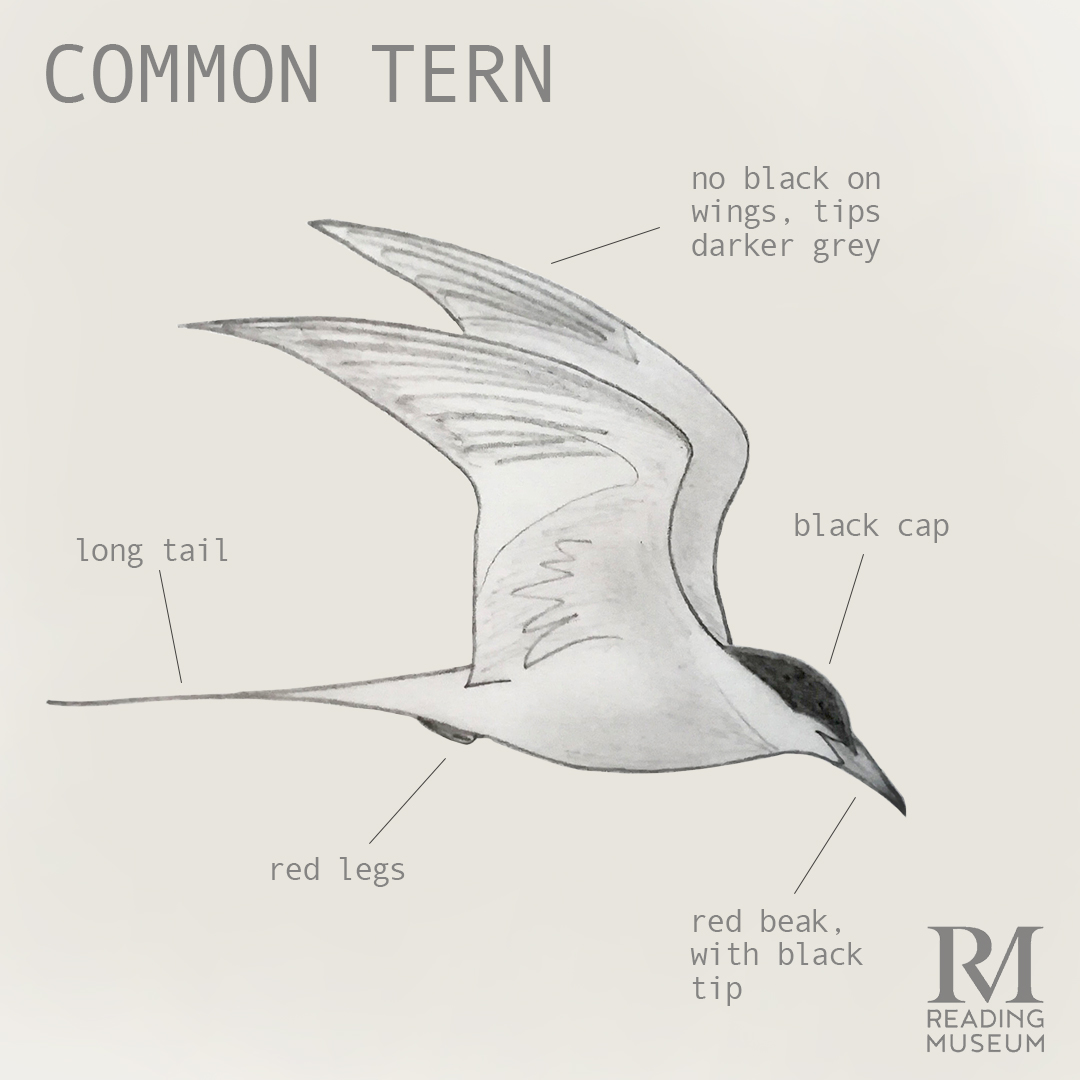
Common Tern
Small birds swooping over the water...
Swallows and their close relatives the martins flutter and jink in the air, and they will sometimes come very close to you so if you follow them with your eyes you can get a good look! Swallows are dark with a long tail (in good light actually metallic blue above and creamy white below with a dark red face). The martins have shorter forked tails. House Martins are bright white underneath and black on top with a flash of white above the tail. They build mud nests under the eaves of houses. Sand Martins nest in holes in sandy banks which they can find in gravel workings, so they're more common along Reading's waterways. They look dark in silhouette, paler below, but when you see them against trees or buildings they're brown on top, with a brown chest band.
The unrelated Swift is bigger, all-dark, crescent-shaped in flight, with fast, flickering wingbeats. They are highly adapted for life in the air, landing only to nest and rear their young. All these birds are summer visitors, catching flying insects above the water and sometimes drinking from the surface. They spend the rest of the year in Africa - exactly where is still a mystery.
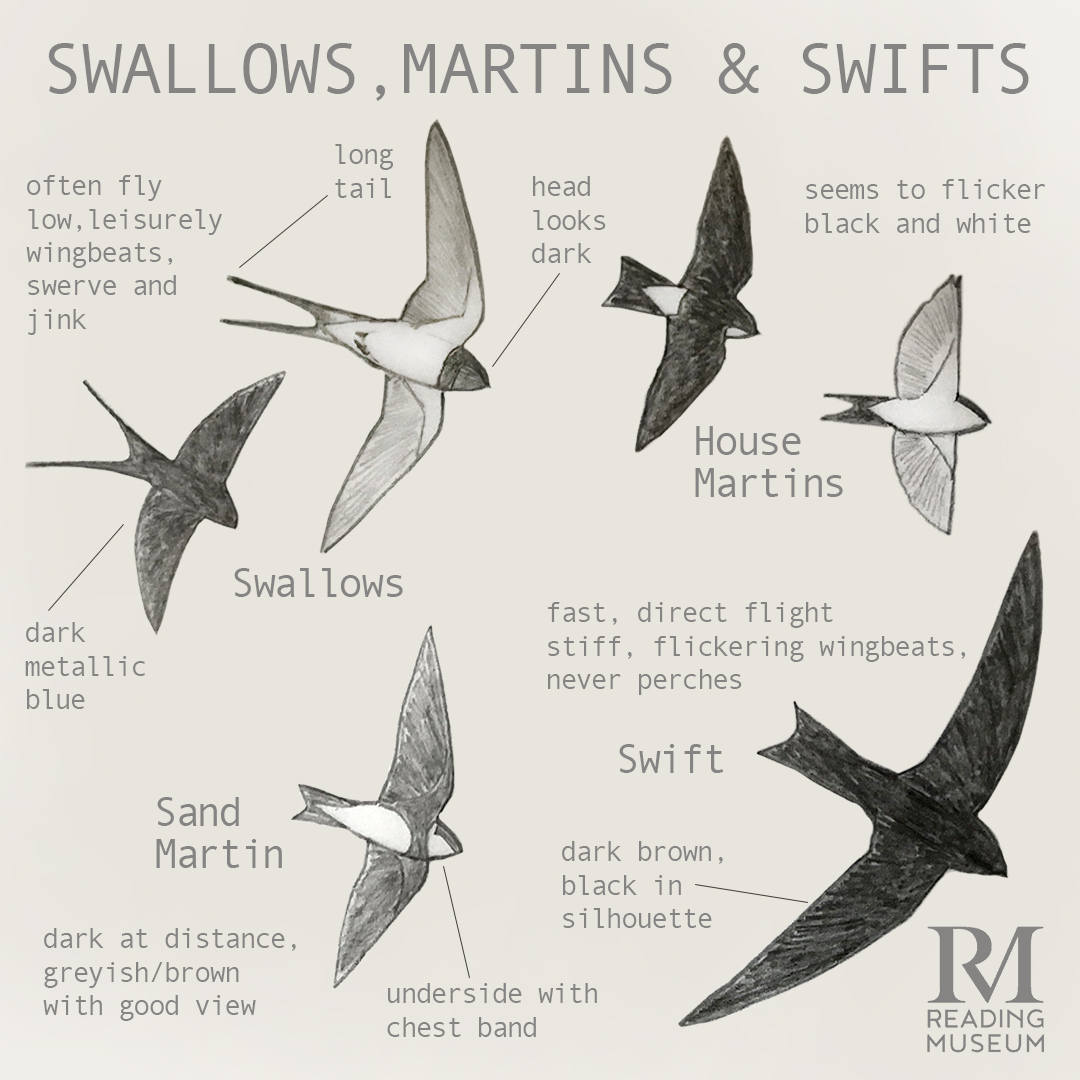
Swallows, Martins and Swifts
...and racing along it like lightning!
If you catch sight of a small electric-blue streak with whirring wings following the course of the river it's a lucky day - you've just seen a Kingfisher! The eye-catching blue runs right down its back. If you spot it in time you might also pick up the orange underside, although you probably won't notice the darker (but still iridescent) blue of the head, wings and tail. Seeing the head pattern and dagger-like beak would take a very good view. This is the most brilliantly coloured bird in Britain, but if it lands it'll probably disappear - somehow their bright colours are invisible unless they're moving. They fly direct, and fairly low (below treetop height). They eat small fish which they catch by diving from a perch.
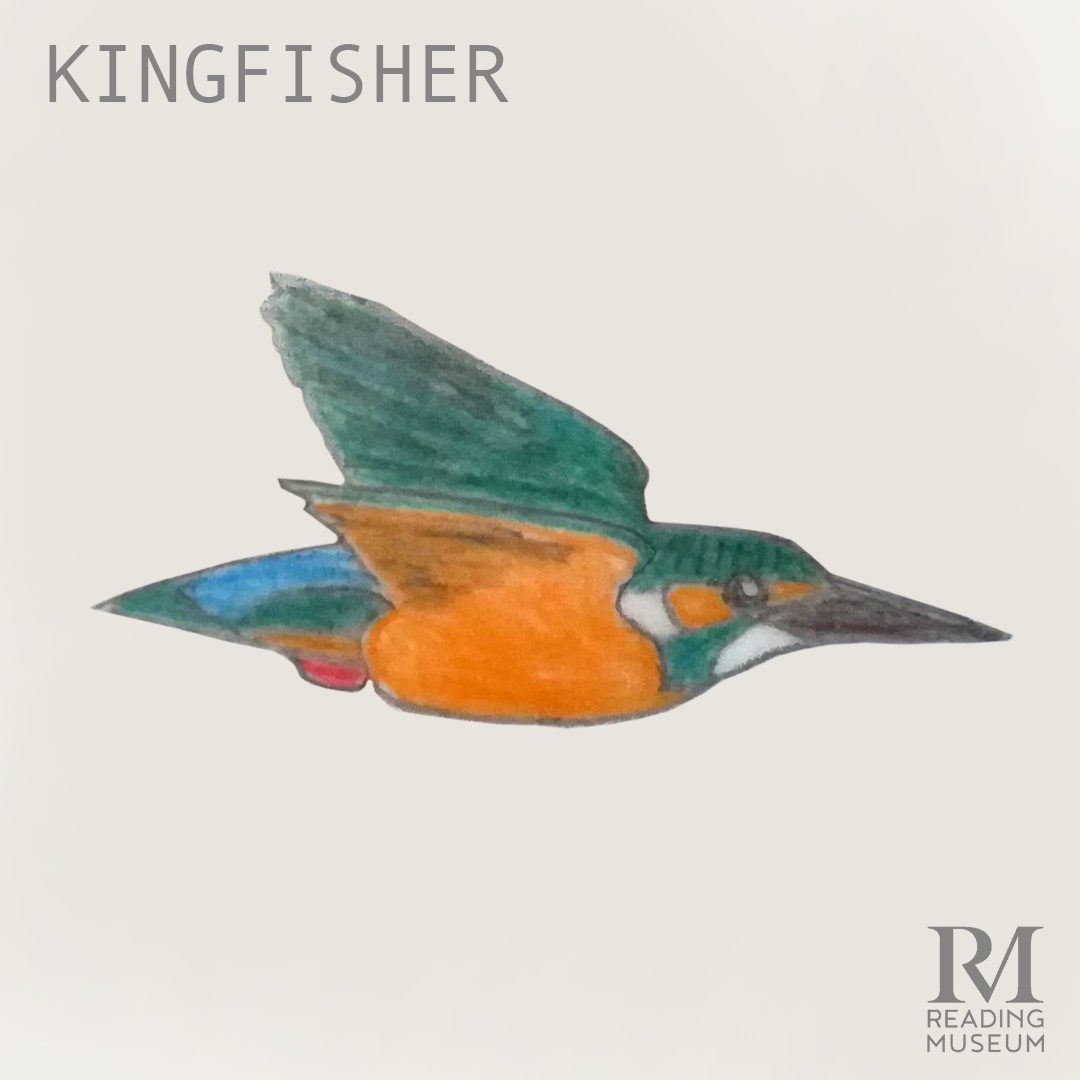
Kingfisher

